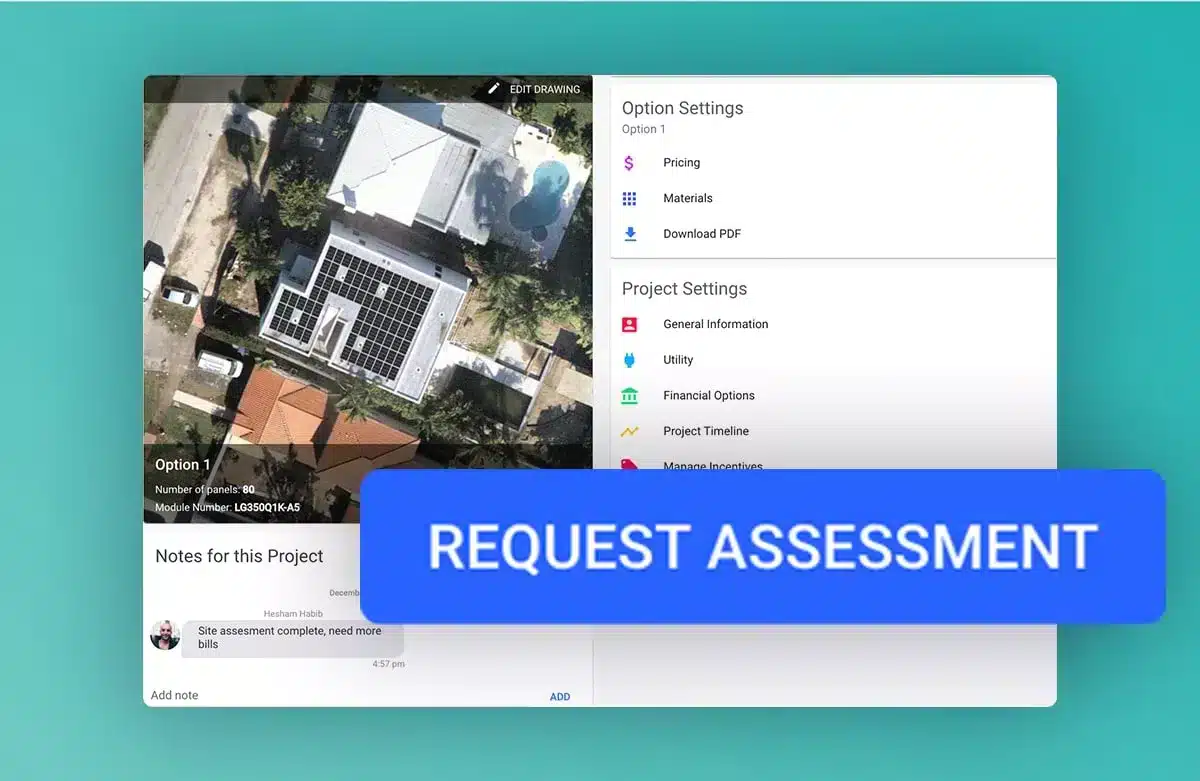
When we launched our newest feature, Virtual Site Assessment in early June, we were responding to a need from our clients to be able to get as much of the work on their projects done remotely as possible.
Now that we’ve been seeing how our clients have been using the feature, we’ve decided to give you a few reasons why you need to start incorporating it into your own solar sales/installation process if you haven’t given it a try yet. Otherwise, you’ll be missing out on the opportunity to get in on your competitor’s best-kept secret.
1) Get more installs done in half the time
Prior to the adoption of solar software for system design and proposal generation, solar companies needed to schedule at least three visits to the home throughout the solar quoting/installation process – once to measure out the roof and put together the quote, once to perform the site assessment, and a third time for the system installation.
With virtual assessments now in your toolbox, you really only need to schedule a date at the project site for the installation of the PV system. This cuts your travel time and time spent on-site in half, leaving you with more time to spend on sending out more quotes and scheduling more installs than you would have been able to previously. The opportunity for business growth cannot be overstated enough.
2) Engage the homeowner by involving them in the quoting process
In a recent webinar, Joseph Marhamati, VP & Co-Founder of Ipsun Solar mentioned that Solargraf’s Virtual Site Assessment feature is “actually something you can sell on because customers like being a part of the process if it’s something easy for them to do. They feel like they’re being useful and like they’re learning, especially if it speeds up the process.”
Sending a lead a proposal and discussing options with them is one thing, but asking them to actively participate in the process can really help a homeowner feel in control of the project – especially when that project is a large financial investment for them. Solar systems aren’t cheap and letting them into the fold can really help put their mind at ease in regards to their large purchase.
3) Make your company look better than your competition
One of the biggest advantages of having a virtual site assessment feature integrated within your software platform is that more of the work can be done remotely. Not only is this great for the current time, but it also sets you apart from your competitors. To fully take advantage of this boost, you’ll need to get started with using now before your competitors begin to adopt it or develop their own, similar technology to level the playing field.
We all know that homeowners interested in solar panels are doing some shopping around, gathering anywhere from two to ten different proposals. When they find out that you can get a large part of the job done off-site, they’ll be wondering why your competitors need so many extra meetings to get the same amount of work done. Use this to your advantage and get ahead before anyone else has a chance to scoop up that lead you’ve been working so hard on closing!
4) It’s versatile – you can use it for more than just site assessments!
While the Virtual Site Assessment feature was originally developed to help solar installers get the information they need to either complete a proposal or get all the details needed to apply for permits, there are also a few hidden uses of this tool that could save you some time or increase your sales.
One unconventional way to use this feature is as a checklist for your sales team to use when they’re out in the field. Asking them to complete/check off certain tasks and return any photos or documents through the software ensures that project managers can stay up to date with the team at any time without having to directly reach out to them. Making sure a checklist is completed before heading back to the office also leaves less room for error and ensures everyone is aware of what needs to be done at each location.
Secondly, the Virtual Site Assessment section of the project page can be used for more than just collecting measurements and photos of the home. Homeowners who would rather sign printed versions of your proposals can sign paper copies and upload scans/photos of the contract directly into their project. Asking for a picture of their electricity bill using this space also saves you from having to write yet another email before you can get to work on the quote.
In Closing
Virtual Site Assessments add one more tool to your toolbox, and having this feature already included in your solar proposal software means less steps and less work to get the job done. Pairing a seamless sales experience with reduced travel times and more customer engagement is sure to help you stay on top and beat out your competitors every step of the way. There’s no time like the present to test out this feature, or if you’ve already tried it out, let us know how you’ve been using this feature in your day-to-day!
Want to learn about more Solargraf features built to help save you time and money? Click here.



 United States
United States Germany/Austria
Germany/Austria Brazil
Brazil Netherlands
Netherlands